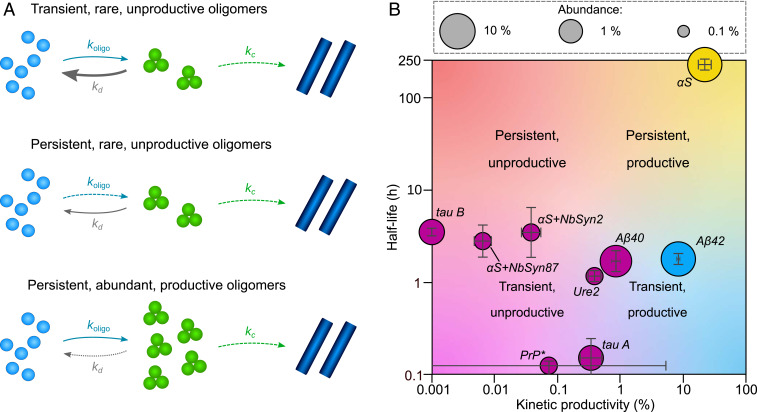Fig. 3.
(A) Categorizing oligomers from Fig. 2 by their key properties. “Persistence” is the kinetic stability of the oligomers as indicated by their half-life (with ). “Abundance” is the maximal rate of formation divided by the maximal rate of depletion and indicates the maximal steady-state oligomer concentration. “Productivity” indicates the relative contributions of conversion and dissociation to overall oligomer depletion, defined as . (B) Of the systems hitherto studied, in every case, the oligomers dissociate more rapidly than they convert, and only αS oligomers, Aβ42 oligomers, and type-B (off-pathway) tau oligomers persist longer than the corresponding monomeric protein. These oligomers are also relatively abundant, as might be expected. Prion protein PrP data were taken from ref. 44 (proteinase K-sensitive species); abundance was not measured.

